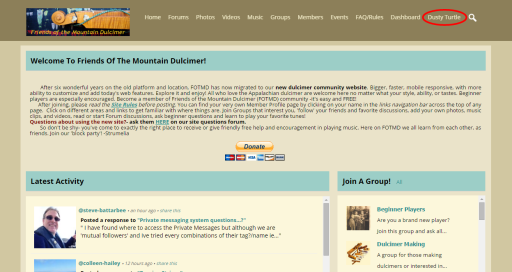Any one ever use this on their dulcimer to adhere an external pick up?
General mountain dulcimer or music discussions
Maria,
First, how to remove the suction cup. Yes, you have to unscrew the two little screws to open up the box. Once you get the screws off, carefully open the box, keeping in mind that wires connect the two sides and you don't want to dislodge them. Once it's open you will see that the suction cup screws into a small hex nut. At first I thought that nut was part of the plastic casing, but it is not. I used needle-nosed pliers to start turning the nut, but once it started I was able to unscrew the suction cup by hand. Once you get them detached, put the nut back onto the end of the suction cup post for safekeeping.
Second, no, I did not use the adhesive squares that came with the pickup. I plan to follow Ken H's advice and never leave the pickup attached for too long, so I will need far more than two of whatever I end up using. I experimented with things called removable mounting squares and restickable mounting dots but found the command poster strips got the most volume. I am probably going to try again with even thinner two-sided tape.
Third, when I strum fast, my fingers touch the top of my dulcimer. On my Ewing dulcimette, the cedar top has a clear grain, and my fingers cross that grain, leaving tiny but sometimes noticeable scratches. So I cut a piece of a clear window decal sheet to fit the part of the soundboard where my hand might touch. It is transparent and not always visible, but it offers some little bit of protection. You can see it on this video if you look closely. Look at the the top of the dulcimer near where my hand is strumming and you'll see that part of the dulcimer is shinier than the rest. That is the decal sheet. Yes, you can get it at Staples; in fact that's where I got mine. It is called "Staples repositionable clear window decals" and is intended for you to print pictures and then stick them on windows or mirrors. You can find it in the specialty paper section of the store. You could conceivable just use a square under your microphone, I supposed, and then take it off when you take off the mic. In fact, when you take the adhesive strip off it will pull the decal sheet off with it. I have left the decal sheet on my dulcimer for several months at a time. There is no real adhesive on it, but it can get a little sticky and require some clean-up with a damp sponge. If you never leave it on for more than a week or two you won't even have to do that. I would suggest that anyone concerned with damaging their instrument with puddy or tape should use a small piece of this plastic stuff to protect the surface of their instrument.




